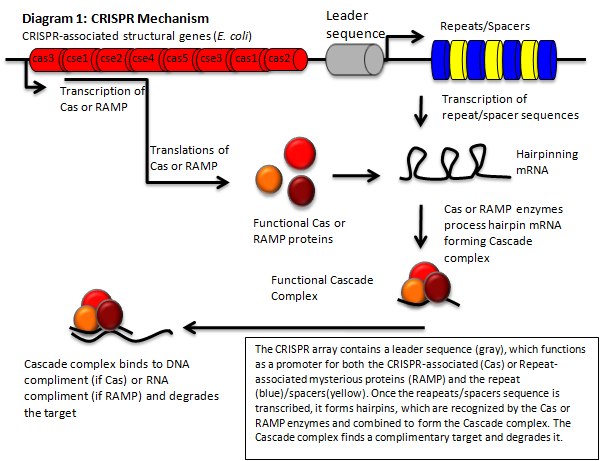Team:Arizona State
From 2011.igem.org
|
|
We are Arizona State University's first iGEM team, working over the summer for the 2011 International Genetically Engineered Machine competition.
AbstractClustered Regularly Interspaced Short Palindromic Repeats (CRISPR) are a genomic feature of many prokaryotic and archeal species. CRISPR functions as an adaptive immune system, targeting exogenous sequences that match spacers integrated into the genome. Our project focuses on developing a set of tools for synthetic control over the CRISPR pathway. This includes a method for creating polymers of repeat-spacer-repeat units, the development of CRISPR biobricks (CAS genes, leader sequences) for several CRISPR subtypes (E. coli, B. halodurans, and L. innocua), testing these components on plasmids containing GFP, and a software tool to collect and display CRISPR information, as well as select spacers from a particular sequence. Given the relatively recent progress in the scientific understanding of this system, we see the potential for a wide range of biotechnological applications of CRISPR in the future. What is CRISPR?Clustered Regularly Interspaced Short Palindromic Repeats (CRISPR) are a genomic feature of many prokaryotic and archeal species. CRISPR functions as an adaptive immune system. A CRISPR locus consists of a set of CAS (CRISPR associated) genes, a leader, or promoter, sequence, and an array. This array consists of repeating elements along with "spacers". These spacer regions direct the CRISPR machinery to degrade or otherwise inactivate a complementary sequence in the cell. |
 "
"

